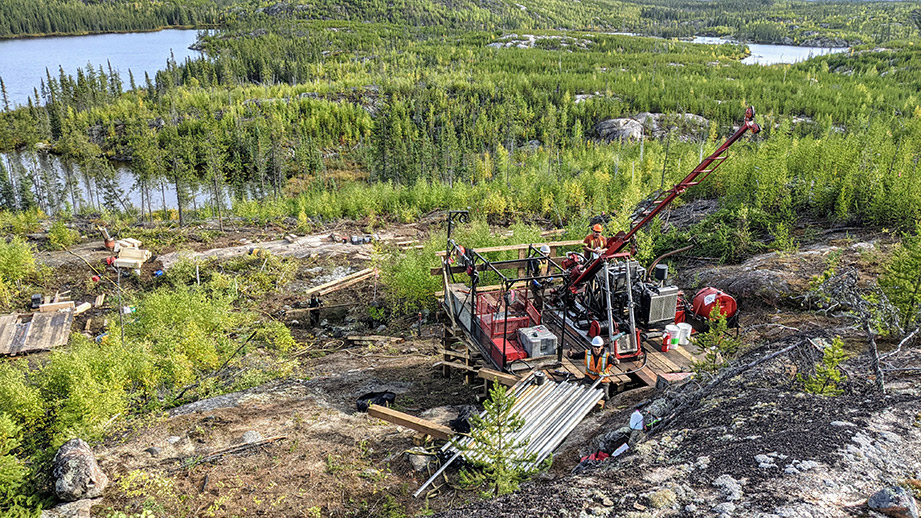JV Article: Appia Energy doubles land package, drilling at Alces Lake, one of the world’s highest-grade rare earth prospects


This year so far has seen a series of milestone events unfold for Appia Energy’s (CSE: API) Alces Lake property in Saskatchewan – one of the highest-grade critical rare earth prospects in the world.
In August of 2021, Appia Energy acquired another 18,105 hectares (44,738 acres) of land contiguous to the claim block at Alces Lake, increasing its 100% owned landholdings to 35,682.2 hectares (88,172.7 acres), doubling the landholdings from the start of the 2021 exploration season.
The market for rare earth oxides used in magnets is expected to increase five-fold by 2030, and demand for rare earth magnets is being driven mainly by electric vehicles, wind generators, medical devices, smart phones, and aerospace and defense applications.
The $14 billion-a-year rare earth magnet market is currently more than 90% controlled by China. The US and Canadian governments have said establishing a domestic supply chain is crucial to reducing dependency on Asian supply.
Since Appia began exploring Alces Lake in 2017, it has discovered a very significant number of REE and uranium-bearing surface zones and occurrences on the 357 sq. km property, 30 km northeast of Uranium City in the Athabasca Basin area of northwestern Saskatchewan.
All the critical REE minerals (neodymium, praseodymium, europium, terbium, dysprosium, and yttrium) along with native gallium are contained exclusively in monazite. The process to extract rare earths from monazite is well known.
This year is turning out to be pivotal for the project’s development.
Doubled drill campaign, newly built year-round onsite camp
Grab samples from the Oldman River target confirm REE mineralization over a 175-metre strike length, with assays up to 3.94% total rare earth oxides (TREO). Grab and channel samples also indicate a number of new discoveries in the Western Anomaly area including Diablo, Sweet Chili Heat and others.

“We have doubled drilling to about 10,000 metres, have completed an airborne survey on the entire property, and we found new, very exciting and prospective rare earth areas on the properties,” says Appia Energy CEO Tom Drivas.
“Based on the airborne survey completed and new targets found, we doubled the land holding and have increased the budget more than four to five times to more than $5 million over last year,” says Drivas.
The new winterized onsite camp will facilitate year-round work, and the plan is to extend the summer program well into or through the winter season.
Channel sampling results include 6.23% TREO over 1.69m at Danny, 2.84% TREO over 3.09m at Ermacre, 1.01% TREO over 7.69m at Biotite Lake and 2.16% TREO over 1.68m at the newly discovered Strocen zone.
Expanded management team
This summer, Appia also expanded its management team, announcing in quick succession the appointment of a new president, Frederick Kozak and a new VP exploration Nicolas Guest.
Nicolas Guest previously led teams responsible for all phases of exploration and achieved record annual reserve replacement at Goldcorp's Musselwhite gold mine.
Frederick Kozak P.Eng, MBA, has been appointed as president. He is a seasoned resource executive and a globally recognized equities analyst, formerly of Canaccord Genuity and Haywood Securities.
REE processing facility situated nearby
Processing the Alces Lake samples won’t entail moving the product far, as the Saskatchewan Research Council (SRC) and the provincial government have plans to build a REE processing facility in Saskatoon, in central Saskatchewan.
Construction of the first stage of the rare earth processing facility, which includes a monazite processing unit (MPU) and a solvent extraction unit (SXU), is underway.
The MPU is expected to be operational in early 2023. The fully integrated facility is expected to be operational by mid-2024, which bodes well for Appia Energy’s Alces Lake project’s prospects.
“We have an exciting, rapidly expanding project, and we are ready to jumpstart it to development,” Drivas says.
The preceding Joint Venture article is PROMOTED CONTENT sponsored by Appia Energy and produced in cooperation with Canadian Mining Journal. Visit appiaenergy.ca for more information.
Comments